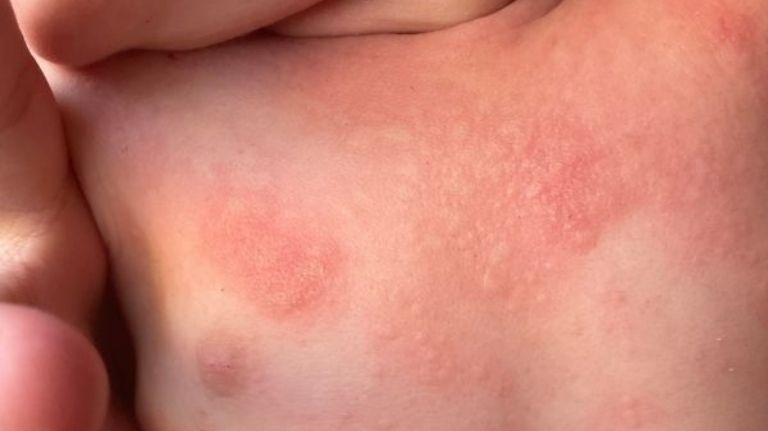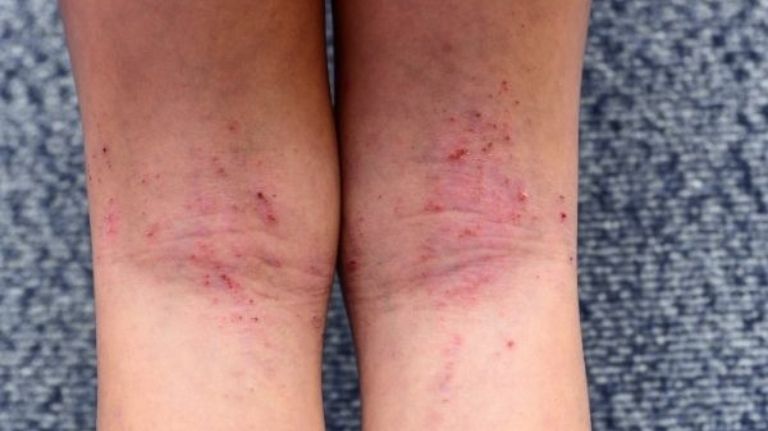Atopic Dermatitis
Atopic dermatitis is a chronic disease characterized by attacks and periods of improvement. Although there is no “cure” method in the treatment of the disease, it is possible to prevent attacks, reduce the frequency of attacks and accelerate the healing of the current attack.


What is Atopic Dermatitis?
Atopic dermatitis, or more commonly known as atopic eczema / childhood eczema, is a type of eczema that usually starts in the first years of life, is temporary, progresses with attacks, and is accompanied by severe itching.
Who Has Atopic Dermatitis?
Atopic dermatitis can be seen in any period of life, although it usually starts in the newborn and childhood. Atopic dermatitis may have different appearances in different age groups, but it is always itchy.
- Atopic dermatitis in infants: In infants, rashes are often seen on the cheek area. Rashes can also be seen on the scalp, face and trunk. Usually the skin is dry, rough and crusted. It may be accompanied by a blistered and runny appearance. Atopic dermatitis can cause restlessness, crying and sleep problems in babies. In the presence of extensive atopic dermatitis, impaired skin barrier and scratching facilitate secondary bacterial infections.
- Atopic dermatitis in children: Atopic dermatitis, which starts from about 2 years of age to adolescence, is usually localized in the knee and elbow folds. The neck, wrists and ankles, groin and buttock folds are other common sites. Itching may be accompanied by a crusty appearance. Thickening and coarsening of the skin, darkening or lightening of the skin color may also be observed due to prolonged itching.
- Atopic dermatitis in adults: Although it is not very common, atopic dermatitis may continue into adulthood or may start after the age of 18. In adult atopic dermatitis, the skin is almost always very dry and sensitive. Hand eczema and eczema around the eyes are more common than in other periods.

What Causes Atopic Dermatitis?
How to Treat Atopic Dermatitis?
Consultation and Evaluation
Prevention and Treatment of Attacks
Follow-up and Long-Term Management
Recommendations to Control Atopic Dermatitis
- Aggressive skin cleansing products and behaviors should be avoided.
- Moisturizer should be used regularly.
- Your doctor will advise you on specific bathing and washing recommendations and the use of moisturizers to help protect your skin barrier.
- The triggering factors for atopic dermatitis may differ for each individual. For this reason, it is important to observe the conditions under which a person experiences an attack.
Factors that often trigger atopic dermatitis include
- Skin care products
- Extreme weather conditions (hot or cold)
- Woolen clothes
- Detergents containing fragrances
- Perfume
- Stress
- Infections

Control of Skin Infections in the Treatment of Atopic Dermatitis
Secondary bacterial skin infections are common in patients with atopic dermatitis due to the impaired skin barrier. The presence of active infection is also one of the obstacles to recovery. While antibiotic drugs in cream form can be used in limited skin infections, systemic antibiotics can be used in widespread infections or your physician may recommend “bleach bath treatment”.
Medicines Used in the Treatment of Atopic Dermatitis
In the treatment of atopic dermatitis, drugs in cream form, immunomodulatory drugs in oral or injection form and light therapy (phototherapy) are among the methods frequently used.The duration of medication use and the treatment of choice are planned individually according to the severity and prevalence of the disease and the personal characteristics of the patient.